Inbox and Environment News: Issue 384
November 18 - 24, 2018: Issue 384
Logging Laws Will Destroy Thousands Of Hectares Of Forests And All That Lives In Them
November 16, 2018: NSW Conservation Council
New logging laws released by the NSW Government today will destroy large areas of publicly owned native forests and make them unfit for native species, according to the NSW National Parks Association, NSW Nature Conservation Council and leading scientists[i].
“The new logging laws released by the Berejiklian government today will destroy large areas of publicly owned native forests and quickly render them unfit for native species,” NSW Nature Conservation Council CEO Kate Smolski said.
“These measures will trash many of the last refuges on earth for an astonishing array of species. Premier Gladys Berejiklian has effectively signed a death warrant for thousands of forest-dwelling animals like koalas, quolls and owls.”
The new Integrated Forestry Operations Approvals will:
- Increase logging intensity throughout public native forests, including legalising[ii] high-intensity clearfell logging in 140,000ha of forests between Taree and Grafton, enabling clear-felling of areas up to 45ha in one go. This will convert biologically complex, natural forests into monocultures and destroy 43% of the mapped high-quality koala habitat on state forests.
- Open previously protected old-growth forest to loggingby ‘remapping and rezoning’ these high-conservation-value areas. Old-growth forests are rare, harbour the last big old trees and provide vital refuges for threatened species, including large owls and gliders.
- Remove the requirement to look for koalas before logging on the North Coast and implement utterly inadequate tree retention rates practically guaranteeing koalas will die in logging operations and hastening their slide towards extinction.
- Allow the logging of giant trees up to 160cm diameter(five metres circumference) so the big trees made available from reduced stream buffers and rezoned old growth can be exploited.
NSW National Parks Association CEO Alix Goodwin said: “The government has made the astonishing choice to implement an intensive harvesting zone that will kill koalas and destroy their habitat, rather than create the Great Koala National Park[iii] that would protect their habitat and allow their numbers to recover. That choice will not be forgotten easily.
“Little wonder a comprehensive community survey, leaked to the press this week[iv], showed strong public opposition to native forest logging throughout Australia.
“An industry that is clearfelling koala and glider habitat and wants access to protected forests is an industry nobody wants or needs.”
References
[i]See comments from Brian Tolhurst (EPA) and NPWS in the Threatened Species Expert Panel Review: https://engage.environment.nsw.gov.au/29948/documents/77095
[ii]So-called ‘Heavy Single Tree Selection’ (Heavy STS) has been practised by Forestry Corporation since 2010 outside the scope of the previous laws. The new laws legalise this practice as a result of the Natural Resources Commission’s acceptance of Heavy STS as a legitimate logging technique.
[iii]There is significant overlap between the intensive harvesting zone and the Great Koala National Park. Find out more on the GKNP here: https://drive.google.com/file/d/0B3sKmVn4kYOBb
[iv]SMH: Bush turns its back on native forest logging: https://www.smh./bush-turns-its-back-on-support-for-logging-native-
November 16, 2018: NSW Conservation Council
New logging laws released by the NSW Government today will destroy large areas of publicly owned native forests and make them unfit for native species, according to the NSW National Parks Association, NSW Nature Conservation Council and leading scientists[i].
“The new logging laws released by the Berejiklian government today will destroy large areas of publicly owned native forests and quickly render them unfit for native species,” NSW Nature Conservation Council CEO Kate Smolski said.
“These measures will trash many of the last refuges on earth for an astonishing array of species. Premier Gladys Berejiklian has effectively signed a death warrant for thousands of forest-dwelling animals like koalas, quolls and owls.”
The new Integrated Forestry Operations Approvals will:
- Increase logging intensity throughout public native forests, including legalising[ii] high-intensity clearfell logging in 140,000ha of forests between Taree and Grafton, enabling clear-felling of areas up to 45ha in one go. This will convert biologically complex, natural forests into monocultures and destroy 43% of the mapped high-quality koala habitat on state forests.
- Open previously protected old-growth forest to loggingby ‘remapping and rezoning’ these high-conservation-value areas. Old-growth forests are rare, harbour the last big old trees and provide vital refuges for threatened species, including large owls and gliders.
- Remove the requirement to look for koalas before logging on the North Coast and implement utterly inadequate tree retention rates practically guaranteeing koalas will die in logging operations and hastening their slide towards extinction.
- Allow the logging of giant trees up to 160cm diameter(five metres circumference) so the big trees made available from reduced stream buffers and rezoned old growth can be exploited.
NSW National Parks Association CEO Alix Goodwin said: “The government has made the astonishing choice to implement an intensive harvesting zone that will kill koalas and destroy their habitat, rather than create the Great Koala National Park[iii] that would protect their habitat and allow their numbers to recover. That choice will not be forgotten easily.
“Little wonder a comprehensive community survey, leaked to the press this week[iv], showed strong public opposition to native forest logging throughout Australia.
“An industry that is clearfelling koala and glider habitat and wants access to protected forests is an industry nobody wants or needs.”
References
[i]See comments from Brian Tolhurst (EPA) and NPWS in the Threatened Species Expert Panel Review: https://engage.environment.nsw.gov.au/29948/documents/77095
[ii]So-called ‘Heavy Single Tree Selection’ (Heavy STS) has been practised by Forestry Corporation since 2010 outside the scope of the previous laws. The new laws legalise this practice as a result of the Natural Resources Commission’s acceptance of Heavy STS as a legitimate logging technique.
[iii]There is significant overlap between the intensive harvesting zone and the Great Koala National Park. Find out more on the GKNP here: https://drive.google.com/file/d/0B3sKmVn4kYOBb
[iv]SMH: Bush turns its back on native forest logging: https://www.smh./bush-turns-its-back-on-support-for-logging-native-
These Two Koalas Lost Their Mothers To Deforestation
I call on you to urgently end the deforestation and land-clearing crisis by making potential koala habitat, threatened species habitat, and other high-conservation-value areas off limits to clearing, and by repealing the land-clearing codes.
I also urge you to invest in a restoration and conservation fund and deliver the world-class mapping, monitoring, and reporting the community expects.
Commencement Of The Coastal Integrated Forestry Operations Approval
November 16, 2018: EPA Media ReleaseOn 16 November 2018 the NSW Minister for the Environment and NSW Minister for Lands and Forestry updated the rules for how forestry operations must be carried out on State forests and other Crown-timber lands in coastal NSW.
The new Coastal IFOA improves the practicality and effectiveness of regulating native forestry. It provides greater enforceability and certainty of environmental outcomes, including protection of habitat and listed species, while reducing the regulatory burden on the forestry industry.
Further information about the new Coastal IFOA can be viewed here.
Feedback from public consultation From 15 May to 13 July 2018, the NSW Government undertook public consultation on the draft Coastal IFOA, including convening a series of regional workshops with peak stakeholder groups and inviting written submissions. 3,148 written submissions responding to the draft Coastal IFOA were received via post, email and the NSW Government’s ‘Have Your Say’ web portal.
The EPA led the review and analysis of submissions and engaged an independent consultant to prepare a report summarising feedback received. The Consultation Summary Report integrates information received at the workshops and in written submissions. The published submissions and further information about the development of the Coastal IFOA can be viewed here.
The NSW Government carefully considered all feedback received and made changes to the Coastal IFOA to improve its clarity and operability. Other substantive changes increased protections for certain headwater streams, nectar trees and winter-flowing eucalypts, and hollow-bearing trees. Further changes relate to the management of biosecurity risks (pathogens and weeds), the management of ground protection zones, burning provisions and fire management, and the management of debris and damage to retained trees. A summary of the NSW Government response to key feedback received on the draft Coastal IFOA can be found here. The Coastal IFOA can be viewed here.
The commencement of the Coastal IFOA, and other reforms, are key components of the NSW Government’s forestry reform agenda and fulfil commitments outlined in the 2016 NSW Forestry Industry Roadmap.
The Coastal IFOA delivers on the NSW Government’s undertaking to not erode environmental values or have a net change to wood supply and it will be further supported by work undertaken by the Natural Resources Commission (NRC) to reassess old growth on State forest. Further information about the NRCs work can be viewed at www.nrc.nsw.gov.au/ifoa.
From Consultation Summary Report:Forestry industry submissions raised concerns that the conditions and protocols in the draft IFOA would have a detrimental impact on timber supply. They felt that there was an imbalance in protecting environmental values over and above sustaining the forestry industry.
Industry stakeholders also expressed significant concern that a rigid application of threatened fauna species protections would place too many restrictions on harvest yields. Industry submissions noted that currently mapped sensitive environmental zones are likely to be inaccurate and include forests that could be used for timber harvesting.
The need for flexibility in enforcing the IFOA provisions was raised by industry in relation to operational matters such as the management of debris around retained trees. They also commonly raised operational boundary mapping, GPS error and the transferral of operational risks associated with forestry operations from FCNSW to contractors as key issues. This was seen as particularly important due to enforceability of the draft IFOA provisions, and the increase in Penalty Infringement Notice (PIN) amounts up to $15,000 for errors in maintaining exclusion zones.
Campaign submissions by forestry industry employees and family and friends of forestry industry employees highlighted the importance of maintaining a sustainable industry for regional employment and for providing timber to the Australian market. Their submissions contended that the forestry industry maintains the social and economic fabric of rural and regional towns and employs up to 22,000 people in NSW.
Environmental stakeholders predominantly raised issues with respect to reduction of habitat protections for key species such as koalas, gliders, the Regent Honeyeater and the Swift Parrot.
Other key concerns were: » Potential increased harvesting of environmentally sensitive forests due to proposed remapping/ rezoning of high conservation protection zones. There were significant concerns that new mapping would reduce old growth forest by 78% and rainforest by 23%. » Loss of giant and hollow-bearing trees due to harvesting prescriptions. » Impact of doubling the intensity of forestry operations [by 50%] in the ‘selective harvesting zone’ on habitat complexity and connectivity, as well as lack of adequate monitoring and mitigation measures. » Potential for increased soil erosion, water pollution and weed growth due to allowing forestry operations on steeply sloping land (up to 30 degrees) and reducing stream buffers to 5m
Environmental Defenders Office New South Wales (EDO NSW) The EDO NSW was the only peak environmental group to participate in the draft IFOA briefing sessions. Other peak environmental groups declined to attend and queried the authenticity of the consultation process. The EDO NSW conveyed the concerns about the lack of genuine consultation with broader community groups, including environmental organisations on the development of the draft IFOA. EDO NSW expressed the view that community groups have been excluded from meaningful discussions and their only opportunity for input is to comment on decisions that have already been made. Even then, there was the feeling that there is little evidence of the Government responding or changing proposals based on feedback received during consultation processes.
The perception among the environmental stakeholders is that the forestry agenda is being driven primarily by industry. It was noted that this appeared different to how the original IFOA was developed 20 years ago when there was widespread consultation with environment groups in developing the documents.
As part of the draft IFOA, the NSW Government has incorporated the NRC proposal to undertake remapping of old growth forest with new technology to identify if it can be reclassified to support additional timber harvesting. If there is to be a remapping process, the EDO believes there should be input from environmental stakeholders into developing and reviewing the maps. There is significant cynicism among environmental stakeholders about the remapping process, with the view that it will lead to the harvesting of old growth forests and rainforests. Prior to the remapping process, the EDO believes that there should be a conversation about the potential areas that could become available for the forestry industry to obtain additional timber, and whether industry will receive wood supply from elsewhere, if the remapping process determines that areas of old growth forests are more extensive than currently mapped.It was EDO NSW preference that this discussion is had now.
The EDO commented that the environmental groups they work with are of the view that native forestry practices are unsustainable and there should be a greater focus on plantation timber to supply market needs. Other issues raised by the EDO were the need to have all current and future koala protection initiatives fully accommodated within the new Coastal IFOA. In noting this it was emphasised that species protections were a much broader matter than the IFOA and requires additional consideration by the NSW Government.
Australian Government Must Act As Japanese Whalers Leave Port For Whale Hunt And Kill
November 13, 2018: AMCS
The Japanese whaling fleet has left port and is on their way to the Southern Ocean to again kill whales in the name of ‘science’. With the Japanese Prime Minister Shinzo Abe due to visit Australia this week, we call on Prime Minister Scott Morrison to urgently step up action against Japan.
In previous years it has taken the whaling fleet 3-4 weeks to reach the Southern Ocean where 333 minke whales are in the harpoon firing line, including pregnant females, as part of a 12 year program of ‘research’ that will kill almost 4,000 Antarctic minke whales.
"It is unconscionable that the Japanese whalers are once again planning to kill hundreds of whales in the name of ‘science’,” said AMCS CEO Darren Kindleysides.
“In September, the International Whaling Commission rejected Japan’s outrageous attempt to end the global ban on commercial whaling.
“The international community has spoken. Whaling is a cruel, outdated and unnecessary industry which has has lost its social license on a global scale, yet Japan is dead set on killing whales under the thin guise of ‘scientific research’.
“Australia must stop Japan hunting Antarctic whales in breach of international law.
“Our government must act decisively to stop the hunt. When Prime Minister Scott Morrison meets his Japanese counterpart this week he must tell him to bring the whaling fleet home immediately.
“The government must also take further legal action against Japan through the international courts to challenge their ‘scientific’ whaling.
In 2014, in a case brought by the Australian government, the International Court of Justice ruled that Japan's ‘JARPA II’ Antarctic whaling program was illegal and must stop. However, in 2015, the Japanese Government introduced a new Antarctic whaling program and continues to send its whaling fleet to the Southern Ocean for an annual whale hunt.
November 13, 2018: AMCS
The Japanese whaling fleet has left port and is on their way to the Southern Ocean to again kill whales in the name of ‘science’. With the Japanese Prime Minister Shinzo Abe due to visit Australia this week, we call on Prime Minister Scott Morrison to urgently step up action against Japan.
In previous years it has taken the whaling fleet 3-4 weeks to reach the Southern Ocean where 333 minke whales are in the harpoon firing line, including pregnant females, as part of a 12 year program of ‘research’ that will kill almost 4,000 Antarctic minke whales.
"It is unconscionable that the Japanese whalers are once again planning to kill hundreds of whales in the name of ‘science’,” said AMCS CEO Darren Kindleysides.
“In September, the International Whaling Commission rejected Japan’s outrageous attempt to end the global ban on commercial whaling.
“The international community has spoken. Whaling is a cruel, outdated and unnecessary industry which has has lost its social license on a global scale, yet Japan is dead set on killing whales under the thin guise of ‘scientific research’.
“Australia must stop Japan hunting Antarctic whales in breach of international law.
“Our government must act decisively to stop the hunt. When Prime Minister Scott Morrison meets his Japanese counterpart this week he must tell him to bring the whaling fleet home immediately.
“The government must also take further legal action against Japan through the international courts to challenge their ‘scientific’ whaling.
In 2014, in a case brought by the Australian government, the International Court of Justice ruled that Japan's ‘JARPA II’ Antarctic whaling program was illegal and must stop. However, in 2015, the Japanese Government introduced a new Antarctic whaling program and continues to send its whaling fleet to the Southern Ocean for an annual whale hunt.
Mining Industry Rips Off Queenslanders, Enshrines Toxic Legacy
November 14, 2018: Lock the Gate
Mining industry success in weakening mine rehabilitation laws this week will cost Queenslanders dearly, according to Lock the Gate Alliance.
Communities will be left with vast unfilled coal pits and polluted water after mining, and will miss out on the new jobs and investment that mine rehabilitation brings.
“The mining industry has strong-armed the Queensland Government to allow existing mines off the hook from properly cleaning up their mine sites” said Rick Humphries, Coordinator of Lock the Gate’s Mine rehabilitation Reform Campaign
“Mining giants will make fat profits for overseas shareholders and then leave regional communities to live with the mess in perpetuity.
“The mining industry already plans to leave 218 coal pits un-rehabilitated, many of which will drain groundwater permanently and will leave vast, deep scars on the landscape.
“We pushed the Government hard to phase in similar laws that have been in place in the US since the 1970s requiring all pits to be backfilled.”
“Instead, this back down from the Government will not only impact the environment, it will cost jobs and investment in regional Queensland.”
“The Queensland Resources Council is playing Queenslanders for mugs - expecting us to live with their toxic legacies permanently and squibbing on the rehabilitation jobs and investment that would flow from back-filling."
Recent polling in the electorates of Herbert, Capricornia and Dawson revealed a massive 91% of voters wanted mining companies to backfill the coal pits.
Lock the Gate welcomed other aspects of the legal reforms, including improvements to mine planning and reporting and the application of binding targets for progressive rehabilitation.
The community group also welcomed today’s announcement by Deputy Premier Jackie Trad committing the Government to considering the establishment of a Mine Rehabilitation Commissioner.
“We strongly support a Commissioner being appointed, and we sincerely hope the Government follows through on this initiative. This is a glimmer of hope. The Commissioner must have the power to protect the interests of Queenslanders over that of mine shareholders,” Mr Humphries said.
“The Commissioner must have the legislative grunt to ensure the industry is delivering best practice mine rehabilitation at all mine sites.
“If the Government delivers on a Commissioner it would provide an opportunity to drive increased investment and job creation from improved mine rehabilitation in Queensland.”
November 14, 2018: Lock the Gate
Mining industry success in weakening mine rehabilitation laws this week will cost Queenslanders dearly, according to Lock the Gate Alliance.
Communities will be left with vast unfilled coal pits and polluted water after mining, and will miss out on the new jobs and investment that mine rehabilitation brings.
“The mining industry has strong-armed the Queensland Government to allow existing mines off the hook from properly cleaning up their mine sites” said Rick Humphries, Coordinator of Lock the Gate’s Mine rehabilitation Reform Campaign
“Mining giants will make fat profits for overseas shareholders and then leave regional communities to live with the mess in perpetuity.
“The mining industry already plans to leave 218 coal pits un-rehabilitated, many of which will drain groundwater permanently and will leave vast, deep scars on the landscape.
“We pushed the Government hard to phase in similar laws that have been in place in the US since the 1970s requiring all pits to be backfilled.”
“Instead, this back down from the Government will not only impact the environment, it will cost jobs and investment in regional Queensland.”
“The Queensland Resources Council is playing Queenslanders for mugs - expecting us to live with their toxic legacies permanently and squibbing on the rehabilitation jobs and investment that would flow from back-filling."
Recent polling in the electorates of Herbert, Capricornia and Dawson revealed a massive 91% of voters wanted mining companies to backfill the coal pits.
Lock the Gate welcomed other aspects of the legal reforms, including improvements to mine planning and reporting and the application of binding targets for progressive rehabilitation.
The community group also welcomed today’s announcement by Deputy Premier Jackie Trad committing the Government to considering the establishment of a Mine Rehabilitation Commissioner.
“We strongly support a Commissioner being appointed, and we sincerely hope the Government follows through on this initiative. This is a glimmer of hope. The Commissioner must have the power to protect the interests of Queenslanders over that of mine shareholders,” Mr Humphries said.
“The Commissioner must have the legislative grunt to ensure the industry is delivering best practice mine rehabilitation at all mine sites.
“If the Government delivers on a Commissioner it would provide an opportunity to drive increased investment and job creation from improved mine rehabilitation in Queensland.”
Sonic Sea Screening At Avalon Cinema
Living Ocean has initiated a GoFundMe campaign to hire Avalon Cinema for a screening of Sonic Sea.
LO have initiated this campaign to raise awareness that seismic testing is mooted for early next year off our coastline and the public needs to be made aware asap to realise what is at stake.
They will have a balanced panel of experts to discuss the movie and also the issues for all life in the area from any effects of the testing. Also the reality of offshore gas fields and how it could impact fishing, tourism, whale watching plus the hazards that failure of any equipment resulting from the industrialisation of rigs just offshore could produce.
Living Ocean successfully campaigned with NOPSEMA against 2D testing offshore scheduled for peak northern migration of Humpback whales last year. However small scale 2D testing went ahead anyway early this year.
Please share and donate or if you wish to sponsor the screening please contact us.We have charitable tax deductible status.
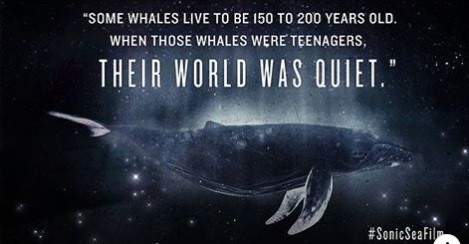

$10 Million For Greener More Inclusive Open Spaces
November 12, 2018: Media Release - Hon. Anthony Roberts, Minister for Planning, Minister for Housing, Special Minister of State
Minister for Planning and Housing, Anthony Roberts, today welcomed the start of construction on a new inclusive play space in Sydney’s west, funded by a $1.5 million NSW Government grant.
Inspecting the site of the future play space in Parramatta Park, Mr Roberts launched two new grants programs, totaling $10 million that will continue to help councils deliver greener and more inclusive spaces that everyone in NSW can enjoy.
“Today I’m delighted to announce that we will be supporting councils across NSW create better places for residents and visitors to play and relax, with $4 million in funding available to upgrade existing or create new play spaces across the state, as part of our Everyone Can Play in NSW initiative,” Mr Roberts said.
“A further $6 million will be available to councils throughout Greater Sydney to green the city and help us reach our target of five million trees by 2030.
“This funding demonstrates our strong commitment to work with our colleagues in local government to support healthier, more resilient and more inclusive communities,” he said.Councils will match NSW Government funding dollar for dollar, to create and improve open and inclusive spaces across Sydney and the state.
Member for Parramatta, Dr Geoff Lee said: “This funding will ensure everyone in Parramatta can enjoy attractive, safe and accessible parks and outdoor spaces.
“It will build the places our communities want and need - places that are a part of everyday life.
“It will also help make our open spaces wonderful places to come and play and explore,” he said.
Commissioner of Open Space and Parklands, Fiona Morrison said green infrastructure, such as parks, trees and wetlands, makes our cities more connected, cooler and healthier places to live.
“Open space is one of our State's greatest assets. Our national parks, harbours, coastal walks, waterfront promenades, playgrounds and reserves are integral to the character and life of NSW,” Ms Morrison said.
Applications for both grant rounds are open from November 12 2018 to December 21 2018 and successful applications will be announced in early 2019.
For more information visit: www.planning.nsw.gov.au/openspace
New Light Cast On Fishing Throughout History
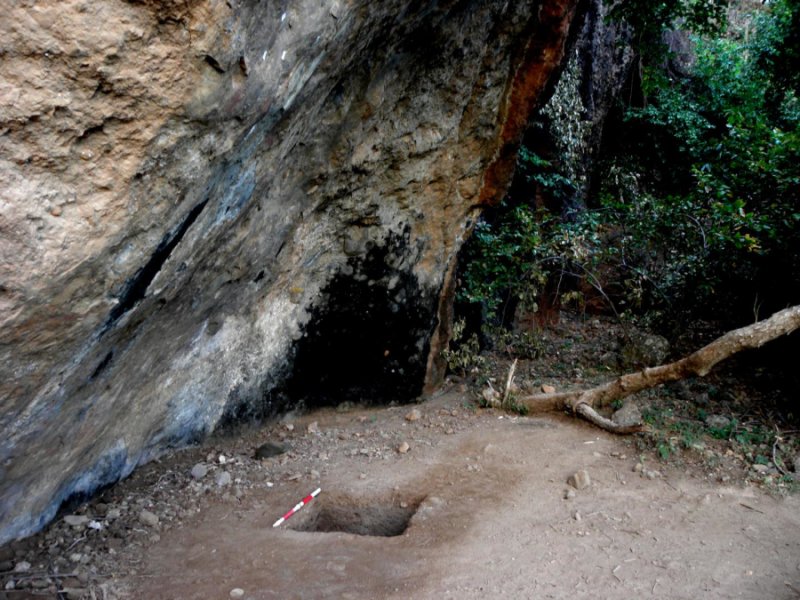
Creative Recycling Solution Turns Coffee Cups Into Kerbs
Spring In Pittwater
Late Spring in Pittwater: November 17, 2018
Angophoras are now in flower as well as shedding bark, a cheeky Sulphur-crested cockatoo atop a sign, two Butcher Bird fledglings pretend to feed each other while waiting for mum and dad to bring back MORE FOOD and White Faced heron fishing - Birds spotted in Careel Creek environs and restored by bushcare thoroughfare.
Iceland’s Banned TV Christmas Advert... Say Hello To Rang-Tan.
DPI Science Leaders At Inaugural Symposium
- Synthetic biology and genetics
- Nanotechnology and sensor technology - early detection and even treatment of plant and animal diseases
- Robotics, machine learning - eg drone swarms to identify and treat weeds
- Big data - large datasets and latest technologies to collect store and analyse data to improve the management of our agricultural and environmental systems
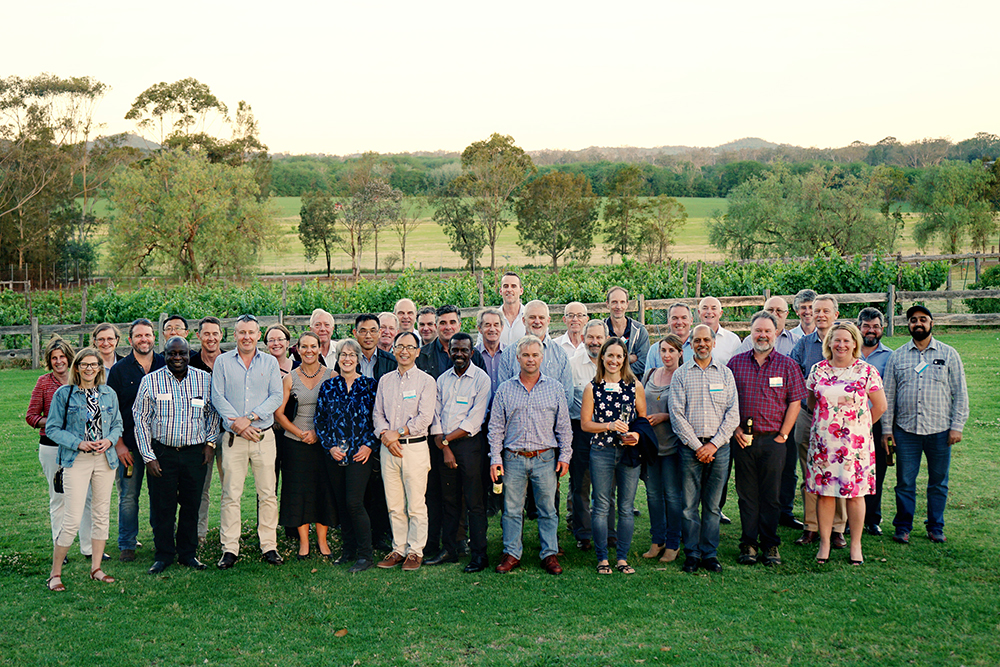
Biology Experiment Helps Historic UNSW Fig Trees Put Down New Roots
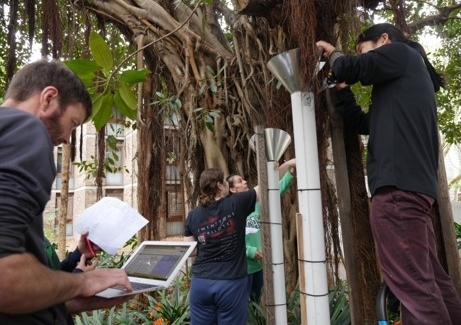
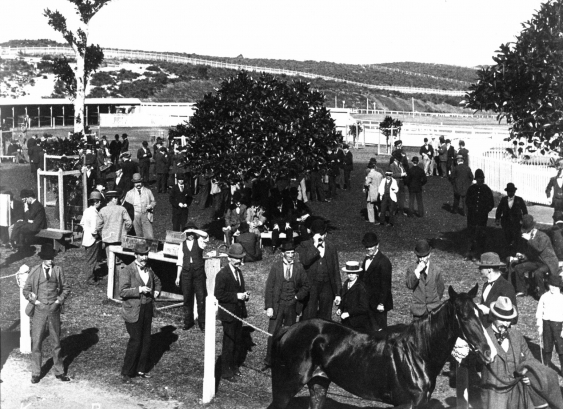
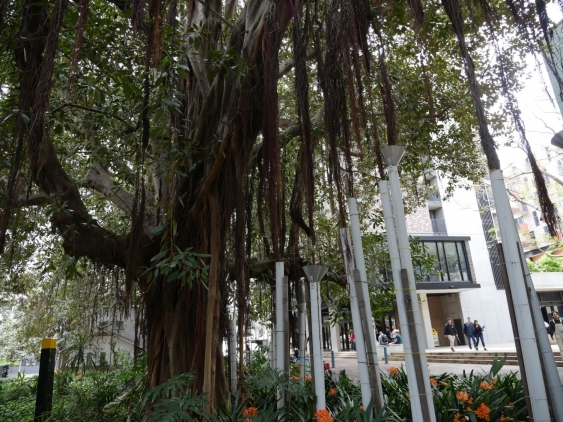
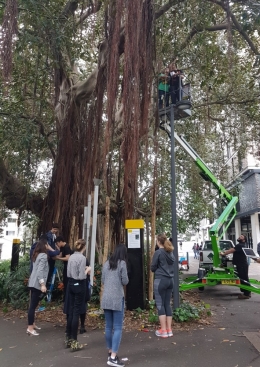
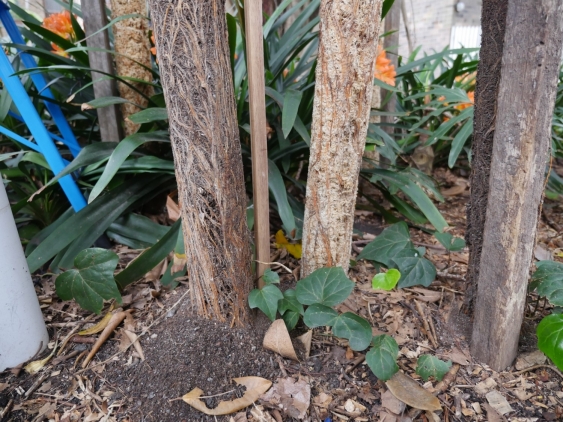
Migration Critical To Survival Of W.A. Dolphin Populations
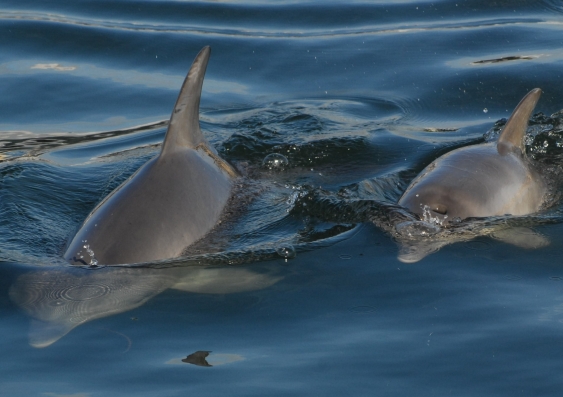
Business As Usual For Antarctic Krill Despite Ocean Acidification
Deepwater Horizon Oil Spill's Dramatic Effect On Stingrays' Sensory Abilities
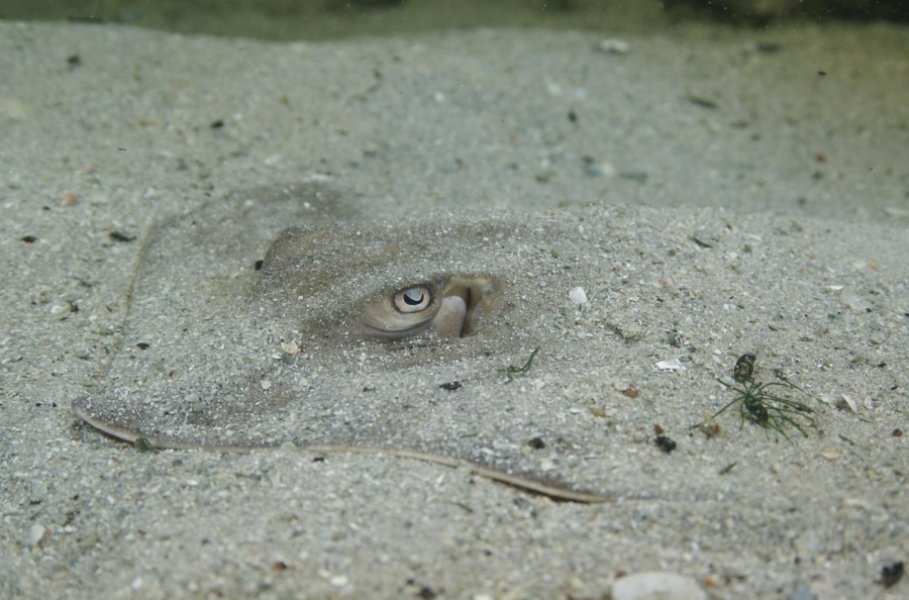
Two New Cases Of Mesothelioma Diagnosed Every Day In Australia
Stealth-Cap Technology For Light-Emitting Nanoparticles
Friend Or Foe: Insects And Spiders In Your Home Survey: Macquarie Uni
Don’t Let Mosquitoes Ruin Your Holidays
- Avoid being outside unprotected, particularly during dawn and dusk when mosquitoes are most active.
- When outside cover up as much as possible with light-coloured, loose-fitting clothing and covered footwear.
- Apply mosquito repellent regularly to exposed areas (as directed on the container). Repellents containing Diethyl Toluamide (DEET) or Picaridin are best.
- Do not use repellents on the skin of children under the age of three months. Instead, use physical barriers such as netting on prams, cots and play areas for babies.
- Screen all windows and doors to keep mosquitoes out.
- When camping, use flyscreens, or sleep under mosquito nets.
- Limit the number of places around your home for mosquitoes to breed by getting rid of items that hold water or by emptying the containers.
'Strongest Evidence Yet' That Being Obese Causes Depression
Adults On The Autism Spectrum Prescribed Mental Health Drugs Without Diagnoses
Blockchain Trial Could Lead To Smarter Money
Disclaimer: These articles are not intended to provide medical advice, diagnosis or treatment. Views expressed here do not necessarily reflect those of Pittwater Online News or its staff.